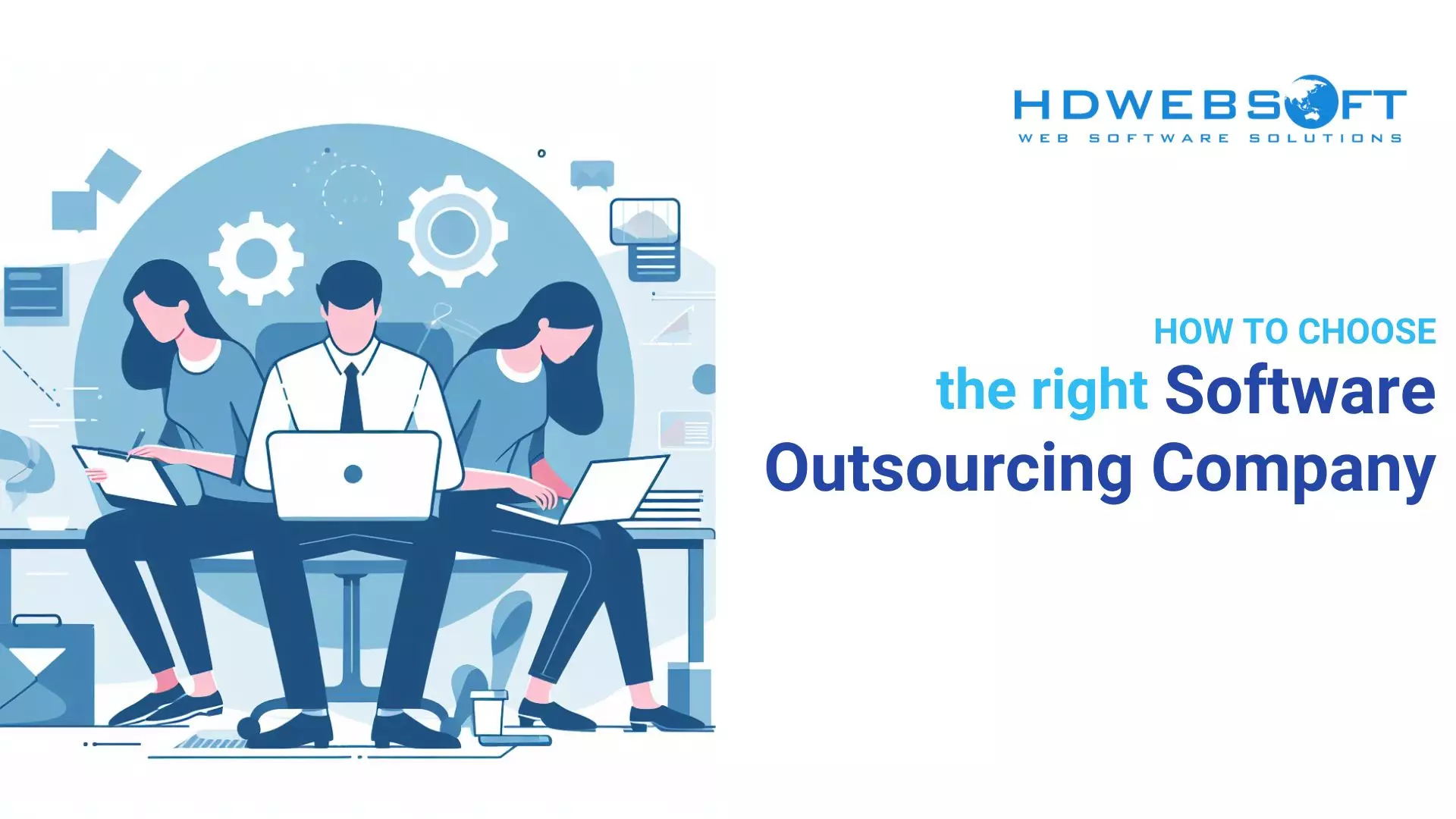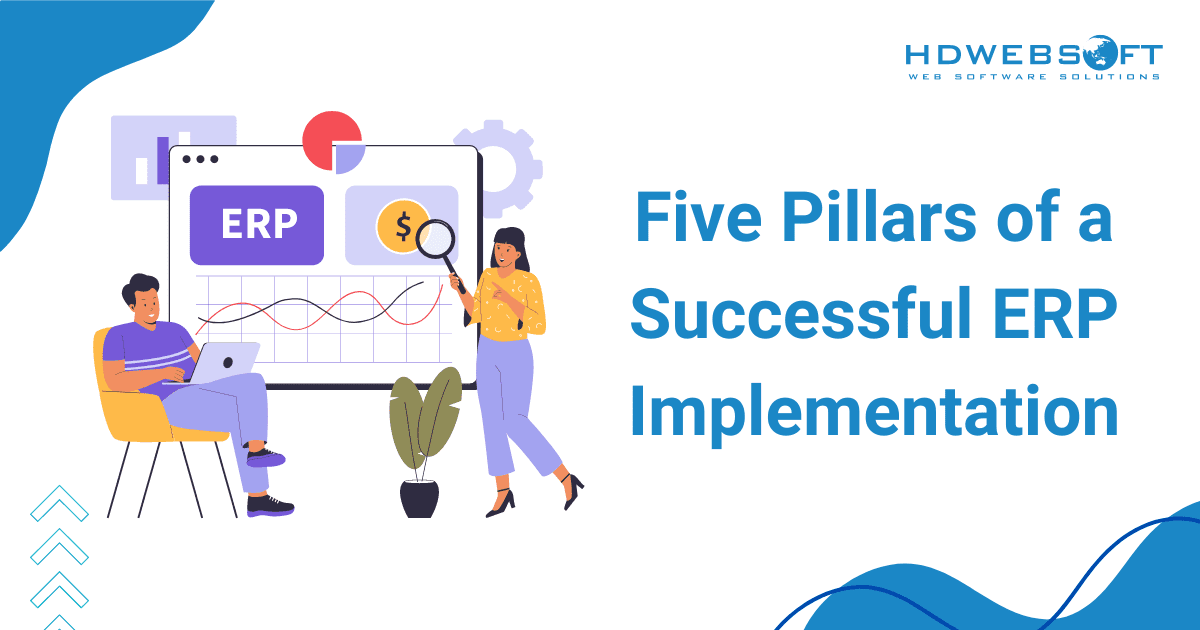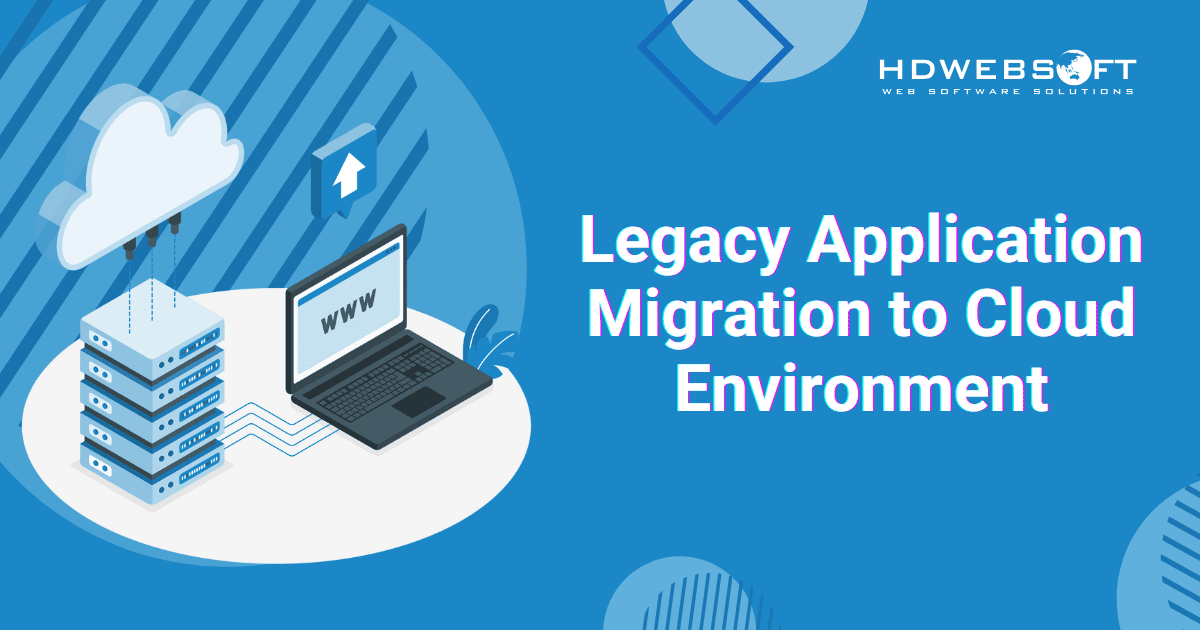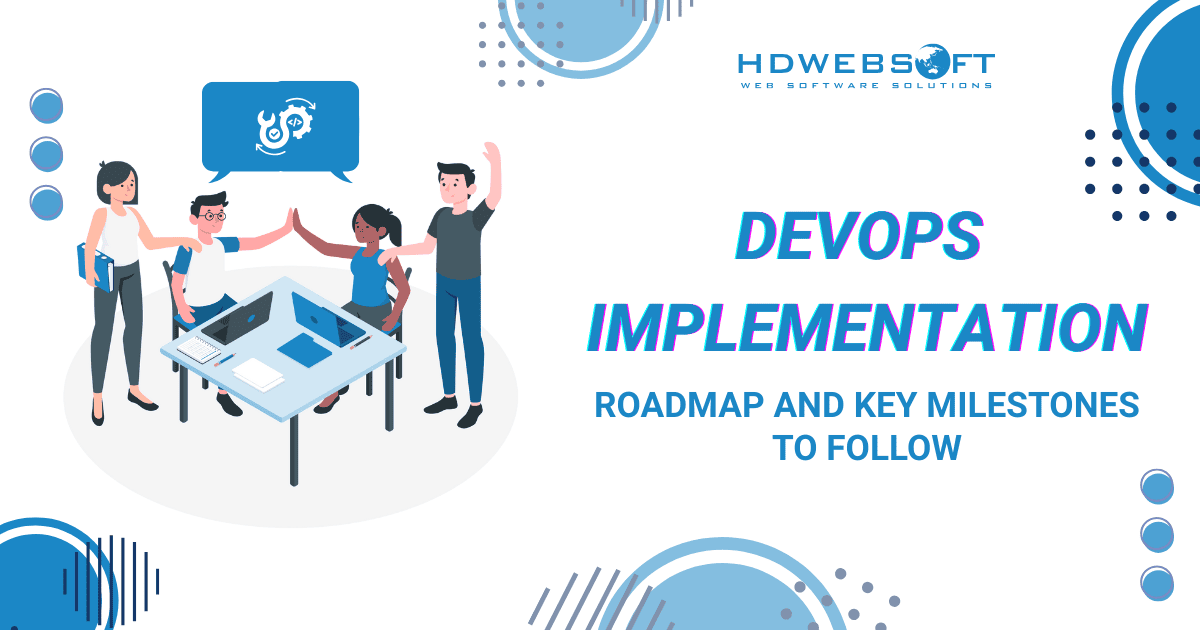
Web Development Costs: Complete Pricing, Timeline & ROI Breakdown
Web development costs remain the most critical question businesses ask before launching their digital projects. No matter which website services you plan to use, understanding the financial investment required can mean the difference between project success and budget disaster. The truth is, the costs of web development can range anywhere from $5,000 for a simple website to over $500,000 for complex enterprise solutions. But what drives these dramatic price variations?
Throughout this comprehensive guide, you’ll discover detailed breakdowns of what you’re actually paying for. Be it realistic timeline expectations that impact your budget, or proven frameworks for calculating your return on investment. When evaluating top-rated web development firms, you are able to make informed decisions rather than simply accepting quotes at face value. By the end, you’ll understand not just the numbers, but the strategic reasoning behind every dollar invested in your digital presence.
Understanding Web Development Costs
Breaking down the web development costs requires looking beyond simple price tags to understand the components, variables, and hidden expenses that shape your total investment. Each project type demands different levels of complexity, expertise, and time commitment from development teams. Consequently, costs vary significantly depending on your specific requirements and the scope of work.
Average Web Development Costs by Project Type
Different project categories command vastly different price points based on their technical requirements and business complexity. Here’s a comprehensive breakdown:
Simple Website (4-8 weeks)
Perfect for businesses needing an online presence with basic functionality.
What You Get: 5-20 pages, contact forms, basic CMS, responsive design
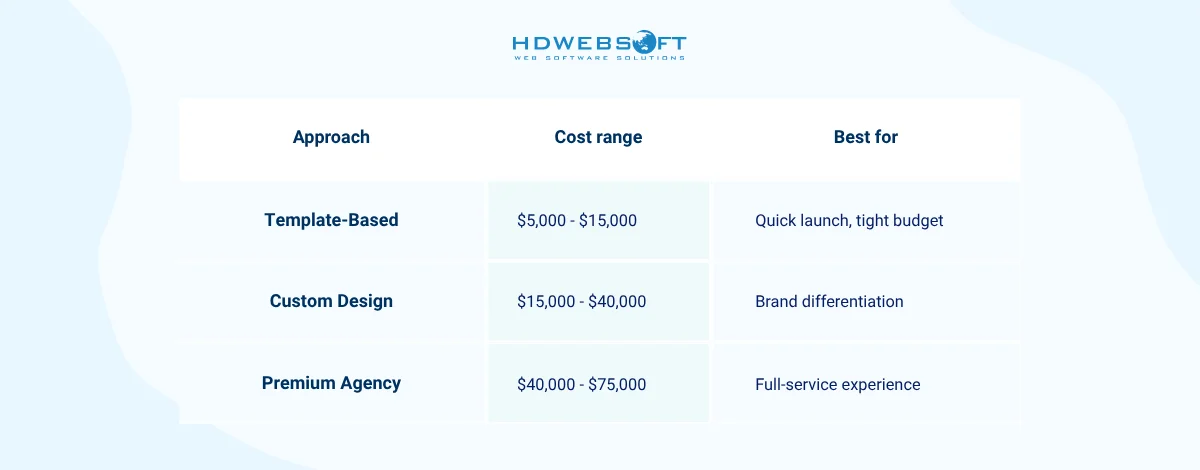
Custom Web Application (3-12 months)
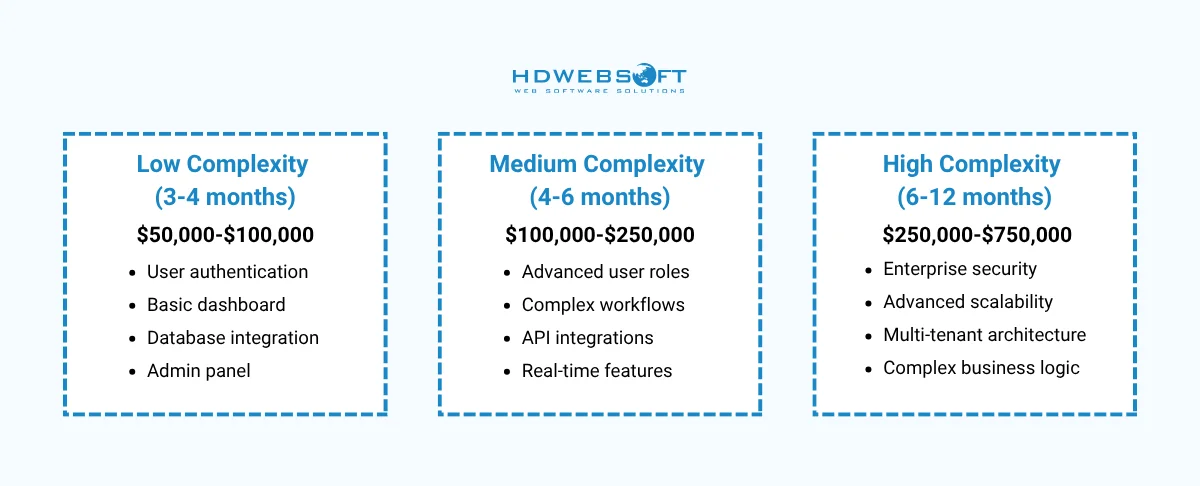
E-commerce Platform (2-12 months)
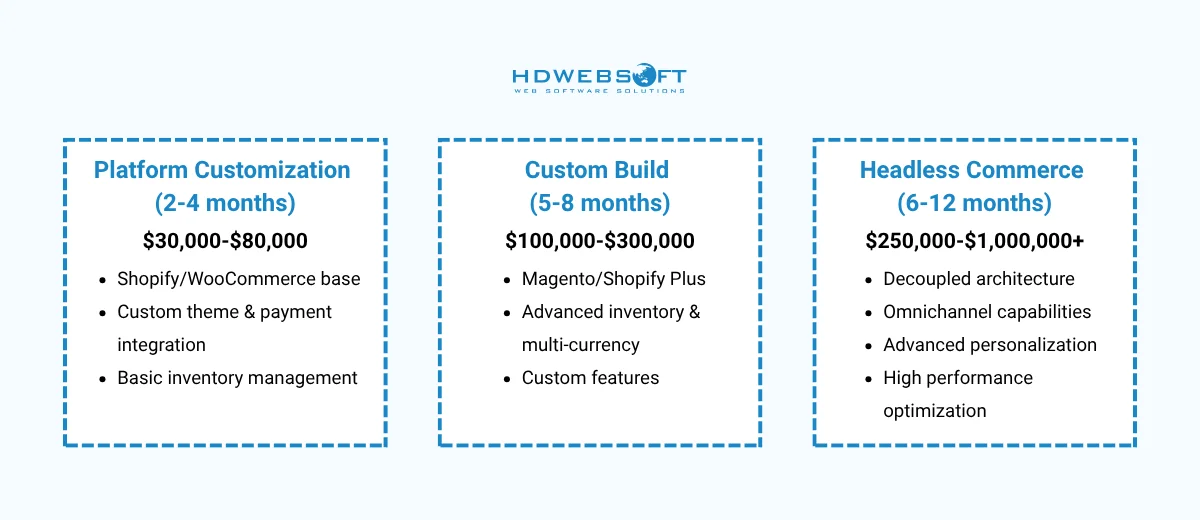
Enterprise Solution (6-24 months)

Detailed Cost Component Breakdown
Understanding where your money goes demystifies the cost of web development and helps you evaluate whether quotes accurately reflect the required work. Rather than seeing development as a monolithic expense, savvy businesses recognize the distinct phases and specializations that contribute to the final deliverable.
Discovery & Planning (10-15% of total budget)
The foundation of any successful project begins with thorough discovery and planning activities that reduce web development costs. This phase includes requirements gathering sessions where stakeholders outline business objectives. It further involves user research to confirm assumptions about target audiences and technical architecture planning to establish the structural framework.
Additionally, comprehensive project scope documentation creates a shared understanding between clients and developers. For mid-sized projects, this typically represents $5,000-$25,000 of the total cost of web development.
Design (20-25% of total budget)
Visual and experiential design transforms functional requirements into intuitive, engaging interfaces that users actually enjoy. UX/UI designers craft wireframes and establish clear information hierarchies. They also create interactive prototypes that demonstrate user flows and develop comprehensive design systems to ensure consistency across all touchpoints.
Typically, standard contracts include 2-3 revision rounds, balancing client feedback with project momentum. Mid-sized projects typically allocate $15,000-$75,000 for design work, reflecting the expertise required to create interfaces that convert visitors into customers.
Front-End Development (25-30% of total budget)
Managing web development costs effectively starts with front-end developers. They’re the ones bringing designs to life through clean HTML, CSS, and JavaScript that perform seamlessly across all devices and browsers. This phase demands meticulous attention to responsive design principles. It’ll ensure optimal experiences whether users access your platform on desktop computers, tablets, or smartphones.
Furthermore, developers implement accessibility standards that comply with WCAG guidelines, making your digital presence usable by people with disabilities. Expect to invest $20,000-$90,000 in front-end development for moderately complex projects.
Back-End Development (25-35% of total budget)
Behind every elegant interface lies sophisticated server-side logic that processes user requests, manages data, and coordinates complex business operations. Back-end developers structure database schemas to ensure performance and scalability. In addition, they build APIs that link system components and integrate external services like payment processors or CRM tools.
Given its technical complexity and business-critical nature, back-end work typically commands $25,000-$105,000 for mid-sized projects. It represents the largest single component of web development costs.
QA & Testing (10-15% of total budget)
Quality assurance specialists systematically verify that every feature functions correctly under various conditions and edge cases. Their testing process includes functional testing to verify business logic and cross-browser testing to ensure a uniform user experience. Moreover, it further includes performance evaluations to detect bottlenecks and security reviews to safeguard against potential threats.
This crucial phase prevents expensive post-launch fixes and protects your reputation, typically costing $8,000-$45,000 for standard projects.
Project Management (10-15% of total budget)
Professional project managers oversee the entire development process and ensure clear communication between stakeholders. They manage timelines and milestones, allocate resources efficiently, and provide regular progress updates. Notably, their oversight prevents the chaos that derails projects lacking clear leadership and accountability.
Budget $8,000-$45,000 for project management services that keep development on track and stakeholders informed throughout the engagement.
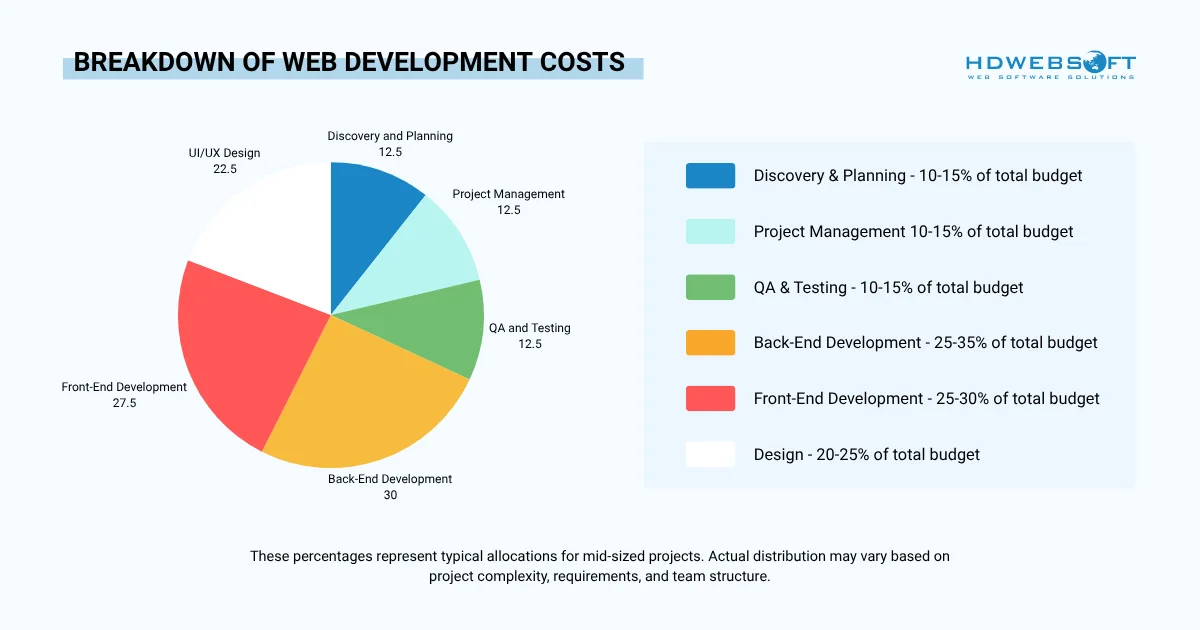
Website Infrastructure and Maintenance Fees
Beyond core web development costs, numerous ancillary costs catch unprepared businesses off guard after contracts are signed. Domain registration and hosting infrastructure require ongoing investment ranging from $100-$5,000 annually, depending on traffic volume and resource requirements.
Similarly, SSL certificates ensuring secure data transmission cost $0-$500 yearly, with free options available for simple sites. Meanwhile, enterprise certificates will command premium pricing.
Third-party Services
Third-party services represent another frequently overlooked category of costs for web development.
- Payment gateways typically charge 2.9% plus $0.30 per transaction
- Email service providers range from $10-$300 monthly
- Content delivery networks (CDNs) improve global performance cost $20-$500 monthly.
- Professional content creation, including copywriting, photography, and video production, can add $2,000-$20,000 to your project budget.
Ongoing Maintenance
Moreover, ongoing maintenance represents 15-25% of initial web development costs annually, covering bug fixes, security updates, and minor enhancements. Security monitoring services that protect against threats range from $1,000 to $10,000 per year. All the while, post-launch marketing and SEO efforts typically require monthly investments of $500-$5,000.
As a general rule, budget an additional 20-30% beyond quoted development costs to cover these essential but frequently forgotten expenses.
Key Factors That Affect Web Development Costs
Project Complexity
The single most significant driver of website development costs remains project complexity, encompassing feature count, sophistication level, and technical challenges. Simple websites with straightforward functionality cost considerably less than platforms requiring custom algorithms, real-time data processing, or complex user workflows.
Plus, custom solutions built from scratch command premium pricing compared to template-based approaches, though they offer superior flexibility and differentiation.
Team Location & Model
Geographic location dramatically impacts hourly rates and total web development costs. US and UK agencies typically charge $100-$250 per hour, reflecting higher living costs and established reputations. Eastern European firms offer competitive quality at $50-$100 hourly, while Asian development teams range from $25-$75 per hour.
However, lower rates don’t automatically translate to savings. Communication challenges and time zone differences can introduce inefficiencies that negate cost advantages.
Technology Stack
Your choice of technologies influences both the immediate costs of web development and long-term maintenance expenses. Modern frameworks like React and Vue.js require specialized expertise commanding higher rates but deliver superior performance and user experiences.
Conversely, established platforms like WordPress reduce upfront costs through extensive plugin ecosystems. However, they may limit customization possibilities for unique requirements. Cutting-edge technologies always command premium pricing as developers with current expertise remain scarce.
Timeline Urgency
As a matter of face, timeline urgency increases the costs of web development.
Rushing development accelerates delivery but inflates web development costs substantially. Standard timelines allow efficient resource allocation and reasonable workloads, establishing baseline pricing. However, compressed schedules require additional developers working in parallel, overtime hours at premium rates, and expedited testing cycles. Collectively, they’ll be adding 30-50% to project costs.
On the other hand, unnecessarily extended timelines can introduce inefficiencies as context-switching between projects reduces productivity.
Design Customization Level
The degree of visual and functional customization directly correlates with design costs. Template customization represents the most economical approach, modifying existing themes to match brand guidelines while accepting some constraints.
Notably, semi-custom designs blend template foundations with original elements, offering moderate differentiation at reasonable costs. Fully custom designs created entirely from scratch command premium pricing. But, it’ll deliver unique experiences perfectly aligned with brand identity and strategic objectives.
Web Development Timeline and How It Impacts Costs
Time and money are inseparable when calculating web development costs across projects. Hence, understanding realistic timelines helps you budget accurately while recognizing how schedule pressure can inflate expenses. Every development phase requires adequate time for thoughtful execution, and shortcuts inevitably surface as technical debt or quality compromises downstream.
Average Web Development Timeline by Project Type
Setting realistic expectations about project duration prevents frustration and helps align stakeholder schedules with development realities. Here’s what to expect:

Key Timeline Factors:
- Phased development is recommended for enterprise projects to deliver value incrementally
- Legacy system integrations can add 2-4 months due to undocumented APIs and technical debt
- Regulatory compliance requirements may extend timelines by 20-30%
- MVP approaches allow market validation before full investment
Timeline Breakdown by Development Phase
Phase 1 – Discovery & Planning (1-3 weeks)
Projects begin with intensive discovery activities, establishing a clear direction and shared understanding. Teams collaborate on requirements documentation, which captures business objectives and success criteria. They also work on technical specifications, defining architectural approaches and technology choices. In addition, they create comprehensive project roadmaps that outline milestones and deliverables.
As a consequence, rushing this foundational phase invariably increases web development costs and creates costly confusion later.
Phase 2 – Design (2-6 weeks)
Design work progresses through distinct stages. It starts with wireframing, which typically takes one week to establish information architecture and layout structures.
Subsequently, visual design requires 2-3 weeks as designers translate wireframes into polished interfaces, incorporating brand identity and user experience best practices. Finally, design revision rounds occupy 1-2 weeks, allowing stakeholder feedback and refinement before development begins.
Phase 3 – Development (6-16 weeks)
Development represents the most time-intensive phase, with front-end implementation requiring 3-8 weeks depending on interface complexity and interaction sophistication. Simultaneously, back-end development spans 4-10 weeks as developers build server infrastructure, database schemas, and business logic.
It’s worth mentioning that modern Agile methodologies often parallelize these workstreams. They allow teams to progress simultaneously while maintaining coordination through regular integration.
Phase 4 – Testing & QA (2-4 weeks)
Rigorous testing prevents embarrassing bugs and security vulnerabilities from reaching production environments, reducing web development costs. Functional testing verifies business logic over 1-2 weeks, then bug fixing will follow. It’ll take another 1-2 weeks, depending on the issue’s severity and volume.
Finally, performance optimization continues throughout testing as teams identify and resolve bottlenecks affecting user experience.
Phase 5 – Launch & Deployment (1 week)
The final week encompasses server configuration and final pre-launch testing in production-like environments. It also includes coordinated go-live execution and immediate post-launch monitoring to address any unforeseen issues. While seemingly brief, this phase demands intense focus and coordination among all team members.
It’s worth noting that Agile methodologies intentionally overlap these phases. They’ll help deliver working software incrementally rather than following strictly sequential processes.
Factors That Extend Timelines and Increase Web Development Costs
Scope Changes & Feature Creep
Mid-project scope changes represent the most common cause of timeline extensions and budget overruns. Each significant addition typically adds 1-3 weeks to schedules and 10-30% to web development costs. This is because developers pause current work, reassess technical approaches, and implement new requirements. Thus, managing scope changes requires disciplined change order processes outlined in properly structured web development contracts.
Delayed Client Feedback
Developers waiting for stakeholder decisions or design approvals waste expensive billable hours while project momentum stalls. Each week of feedback delay potentially increases costs by 5-10% as team members shift focus to other work. And then require time to re-engage with your project context. Consequently, establishing clear feedback service level agreements prevents these costly delays.
Complex Third-Party Integrations
Connecting with external systems frequently consumes more time than anticipated. Particularly when APIs lack comprehensive documentation or legacy platforms present architectural challenges.
Problematic integrations can add 2-8 weeks per system, significantly extending overall project duration and inflating costs through unexpected complexity.
Unclear Requirements
Projects beginning without thorough requirements inevitably require costly rework as stakeholders clarify expectations mid-development. Discovery phase revisits, design iteration multiplication, and development rewrites can easily double both timeline and web development costs compared to projects with clear upfront specifications.
Maximizing Your Web Development Investment
Beyond understanding costs and timelines, savvy businesses evaluate web development through the lens of strategic ROI rather than treating it as pure expense. This perspective transforms budget discussions from cost minimization to value maximization.
Are Web Development Costs Worth the Investment?
Quantifying returns helps justify investments and set realistic expectations for payback periods.
Expected ROI by Business Type
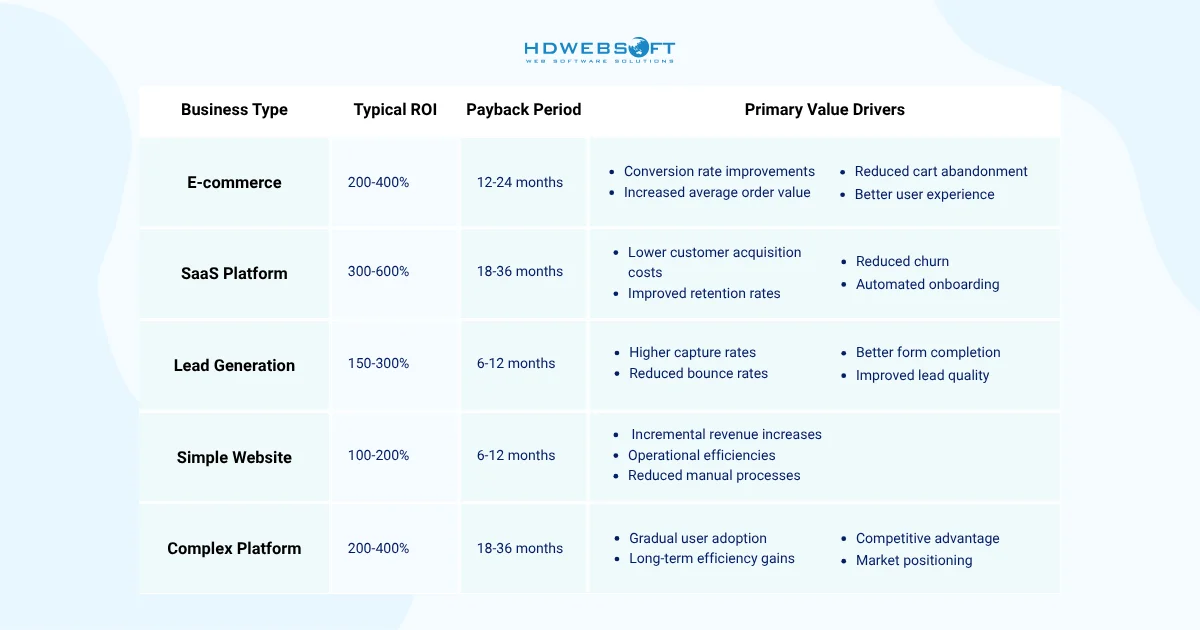
The Cost of Waiting: Opportunity Losses
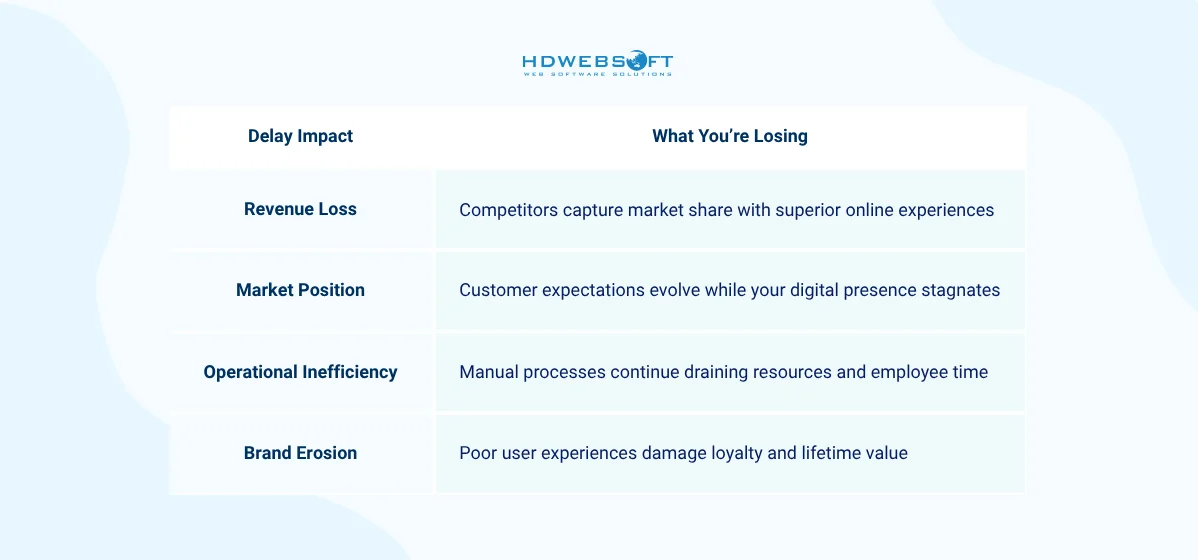
Key Metrics to Track Post-Launch

Simple ROI Calculation Framework
Calculating return on investment needn’t involve complex financial modeling.
ROI % = (Gains – Cost) / Cost × 100
Practical Example:
- Initial investment: $100,000
- Annual revenue increase: $250,000
- Annual maintenance: $20,000
- Total Cost: $120,000
- Gains: $250,000
ROI = ($250,000 – $120,000) / $120,000 × 100 = 108%
This demonstrates strong first-year value creation with a 108% return on investment.
For businesses wanting to estimate their potential returns before committing to web development costs, a website ROI calculator can provide preliminary projections based on industry benchmarks and specific business metrics. These tools help justify investments to stakeholders and set realistic performance expectations.
How to Control Web Development Costs
Strategic approaches minimize expenses without sacrificing quality or long-term value. Starting with MVP (minimum viable product) approaches validates core assumptions before investing in comprehensive feature sets. It’ll potentially save hundreds of thousands on ultimately unnecessary functionality.
Similarly, phased development spreads costs over time, improving cash flow management while allowing market feedback to guide subsequent investments.
Choose the Right Pricing Model
Choosing appropriate pricing models significantly impacts cost predictability and flexibility. Fixed-price contracts work best for well-defined scopes where requirements won’t evolve. Meanwhile, time-and-materials arrangements accommodate iterative development, where learning shapes direction.
Build for Scale
Furthermore, preparing thorough requirements before development begins reduces expensive rework caused by mid-project clarifications. Building for scalability from day one prevents catastrophically expensive rebuilds when success demands platform expansion. Though it sometimes requires a higher initial investment in web development costs,
Finally, choosing the right development partner profoundly impacts both cost and outcome quality, making vendor selection critical to project success.
Final Words
Remember that the cost of web development extends beyond initial build expenses to encompass hidden costs, ongoing maintenance, and long-term enhancement investments. However, when viewed through an ROI lens rather than a pure expense perspective, quality development investments consistently deliver measurable returns through revenue growth, operational efficiency, and competitive advantage.
As you move forward with your web development journey, use this guide to evaluate quotes with confidence. It’ll help ensure contracts reflect realistic timelines and comprehensive cost breakdowns, and choose partners demonstrating transparency about pricing structures.
Ready to discuss your specific project requirements with a team that prioritizes clear communication and predictable outcomes? Explore HDWEBSOFT’s website development services for transparent pricing and proven results that align investment with strategic value.






